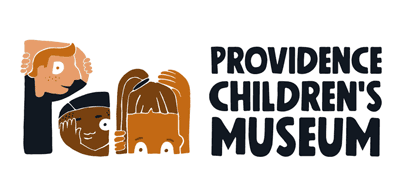The Harlem Renaissance: Individualism and Community Pride
Developed by Katie Reeve, PCM Play Practicum 2023, Verizon Tech Enhanced 2023
(FOCUS: Grades 4-5, Library, Design-Thinking)
In this lesson Grade 4-5 students will be introduced to the Harlem Renaissance. It will be followed up by a lesson that will explore the life and accomplishments of two of its female vocal performers using the AR application “Unsung,” which educators and parents can access for free via Verizon Innovative Learning HQ.
What will students do?
- Students will be introduced to the Harlem Renaissance as a cultural and artistic movement to build African American pride and identity.
- Students will understand that the voices and talents of many individuals contributed to the success of the Harlem Renaissance.
Materials to gather
- A picture book to read aloud as a hook to the lesson/unit. A few suggested titles:
Schomberg: The Man Who Built a Library (Picture Book)
Take a Picture of Me, James Ver Der See (Picture Book. Har Ren Photog. Took picture of Florence Mills!)
Sugar Hill, Harlem’s Historic Neighborhood (Picture Book)
- Video(s) of the Harlem Renaissance for elementary students.
- Paper
- Chart paper
- Markers or colored pencils
Set Up
An area will be needed for a read aloud, then for video watching for students to build an interest in, and get an overview, of the Harlem Renaissance.
Space will be needed for students to work alone or in small pairs after in order for them to create an artistic response to their understanding of the Harlem Renaissance.
Student’s Job
After students hear a story related to the Harlem Renaissance and then watch a video(s) about the period.
Working alone, or in pairs/trios, students will create a piece of art inspired by their introduction to the Harlem Renaissance. It could be a drawing or collage of doodles and words. Alternatively, students can write a short poem or song inspired by the spirit of the Harlem Renaissance.
Students will share their artistic creations or performances with the class.
Further Challenges:
Groups who finish their artistic responses early could extend this by using Google Earth to explore the Harlem neighborhood today!
Teacher’s Job
Standards Alignment
English Language Arts Standards (Common Core – Rhode Island):
- Reading Informational Texts (RI.5):
- CCSS.ELA-LITERACY.RI.5.1: Quote accurately from a text when explaining what the text says explicitly and when drawing inferences.
- CCSS.ELA-LITERACY.RI.5.2: Determine two or more main ideas of a text and explain how they are supported by key details.
- CCSS.ELA-LITERACY.RI.5.3: Explain the relationships or interactions between two or more individuals, events, ideas, or concepts in a historical or scientific text.
- Writing (W.5):
- CCSS.ELA-LITERACY.W.5.7: Conduct short research projects that use several sources to build knowledge through investigation of different aspects of a topic.
Social Studies Standards (Rhode Island Grade Span Expectations):
- Historical and Social Sciences Analysis Skills (HSSA):
- HSSA 5 (Grade 5): Demonstrate an understanding of historical and social science concepts, such as chronology, cause and effect, conflict, and diversity, and how they are used to interpret and analyze historical events.
- HSSA 5.12: Analyze how people have expressed themselves through the arts, beliefs, and ways of life in various times in different cultures.
Speaking and Listening (SL):
- SL.1: Engage effectively in a range of collaborative discussions with diverse partners on grade level topics and texts, building on others’ ideas and expressing their own clearly.
Visual Arts (if applicable):
- VA:Cr1.1: Engage in the creative process to generate and visualize ideas.
- VA:Cr2.1: Experiment and create artworks based on personal interests and themes.
Prepare/ Background Info
- Provide a brief overview of the Harlem Renaissance, explaining that it was a cultural, social, and artistic explosion that took place in Harlem, New York, during the 1920s.
- An elementary appropriate video should then be shown to provide more background content, as well as add visual and auditory support for engagement.
Effective Facilitation Strategies
- Asking students open ended questions to encourage language/vocabulary development and expression of ideas.
- Providing children with a balance of instruction and time to explore and play with materials independently.
- Providing support and scaffolding to students at a level that is appropriate to each student developmentally.
Play to Notice (Learning Framework)
- Child Centered: Students have the opportunity to make decisions about how they will artistically represent their understanding of the era.
- Choice: Students may choose what kind of artistic response they would like to make to represent thot understanding of the era.
- Challenge: Students can successfully complete the guiding questions and design challenge at whatever level they are at. Some students may build simple drawings, while other students may build more complex ones or even write a song or poem.
- Active: Students will drive the discussion and lesson with their ideas, observations, and questions. In addition, students will be actively working with materials to create their artistic summary.
- Social Support: Students will be interacting with each other and with teachers throughout this whole lesson, sharing materials, ideas, artistry, questions, thoughts, observations and wonderings in both large and small group settings.
Content Matter to Notice
- Are students able to identify how different talents led to growth of the Harlem Renaissance and African American culture and pride?
- Are students able to talk about culture, art, history and community in an age appropriate way?
- With or without teacher/peer support, are students able to persevere through challenges in the artistic process using coping strategies discussed and modeled?
- With teacher support, are students able to plan, and create their art responses?
SEL to Notice
- Are children able to talk about their feelings when their ideas or designs don’t work out the way they planned?
- Are students able to persevere through challenges?

